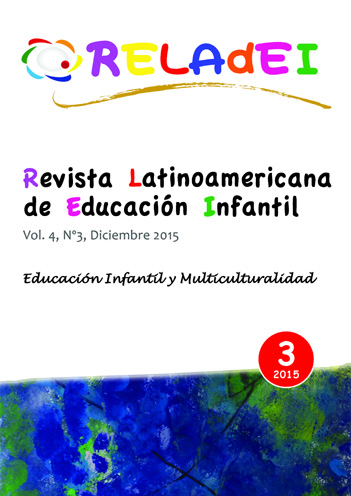Play and tell stories in mother tongue. Handcrafted toys culturally relevant and bilingual story books
Main Article Content
Vol. 4, nº3 (Diciembre 2015). Educación Infantil y Multiculturalidad, Monográfico/Tema del mes, pages 43-60
Submitted: Feb 20, 2018
Published: Jan 3, 2016
Abstract
With the production of bilingual books and handmade toys for Family Education and Community Centers of Early Childhood Education - CEFACEI, Panamá - an explicit link between educational work and the artisans of indigenous communities was born. This new experience emerges in 2005 as a part of the National Plan for Bilingual Intercultural Education of the Ministry of Education and as a big victory for indigenous communities who for many years have claimed the right to an education with cultural relevance.
A brief overview of the historical development of the EIB and its location in Panama helps us to contextualize and define the importance of the task undertaken. This importance increases if we consider the great weight of a vertical and homogeneous school culture as the culture prevailing then in Panama. The weight of that context demanded to be very careful with the new multicultural approach to avoid falling into mere “adequacy” to existing programs. The main challenge to address multiculturalism is to find a baseline to ensure its links with pedagogical principles based on the rights of all children (the right to play, to joy, to use their native language and to build their identity). Educational materials for Intercultural Bilingual Initial Education (EIB) should combine the codes for each culture, to value the elements of life in the community and to find a playful reappropriation of the mother tongue in the case of indigenous peoples semi-assimilated by migration to urban areas. Responding to these postulates, we worked with the following elements: origin, tradition, literature, texts and the concept of playful, creative and collaborative learning environments.
At the time the project represented an oasis in the pedagogical desert of the intercultural bilingual education. The participants had the dream of being at the starting of a new era. And in fact it was so, just a dream, one more illusion in the middle of the blocked structures of the past school system. This reality challenged us to continue developing the true meaning of multiculturalism in the world of education.
The text is organized into the following sections. It begins with an introduction to the historical development of the EIB in Panama, then it follows with (a) the challenge of multiculturalism; (b) the EIB, books and handmade toys for Early Childhood; (c) It happened in that way; (d) production; (e) artisans of handmade toys and (f) between unity and diversity.
A brief overview of the historical development of the EIB and its location in Panama helps us to contextualize and define the importance of the task undertaken. This importance increases if we consider the great weight of a vertical and homogeneous school culture as the culture prevailing then in Panama. The weight of that context demanded to be very careful with the new multicultural approach to avoid falling into mere “adequacy” to existing programs. The main challenge to address multiculturalism is to find a baseline to ensure its links with pedagogical principles based on the rights of all children (the right to play, to joy, to use their native language and to build their identity). Educational materials for Intercultural Bilingual Initial Education (EIB) should combine the codes for each culture, to value the elements of life in the community and to find a playful reappropriation of the mother tongue in the case of indigenous peoples semi-assimilated by migration to urban areas. Responding to these postulates, we worked with the following elements: origin, tradition, literature, texts and the concept of playful, creative and collaborative learning environments.
At the time the project represented an oasis in the pedagogical desert of the intercultural bilingual education. The participants had the dream of being at the starting of a new era. And in fact it was so, just a dream, one more illusion in the middle of the blocked structures of the past school system. This reality challenged us to continue developing the true meaning of multiculturalism in the world of education.
The text is organized into the following sections. It begins with an introduction to the historical development of the EIB in Panama, then it follows with (a) the challenge of multiculturalism; (b) the EIB, books and handmade toys for Early Childhood; (c) It happened in that way; (d) production; (e) artisans of handmade toys and (f) between unity and diversity.
Keywords:
Early Childhood Education, Bilingual cross-cultural Education, Plays and toys culturally pertinent, Early Childhood Education In Panama Educación Infantil, Multiculturalidad, Educación Intercultural Bilingüe, Juegos y juguetes culturalmente pertinentes, Educación Inicial en Panamá
Downloads
Download data is not yet available.

